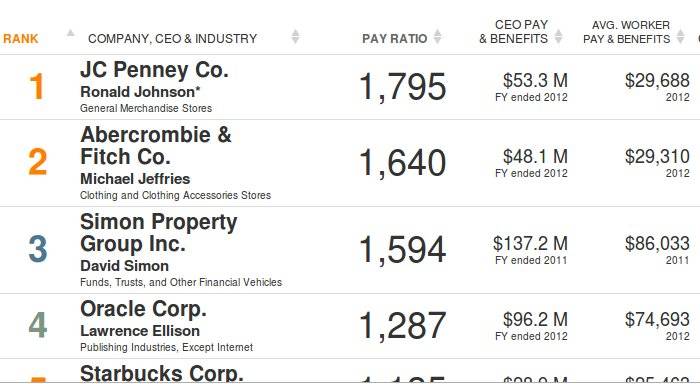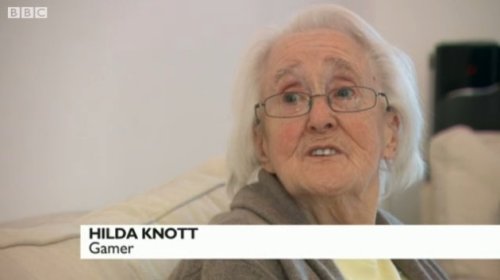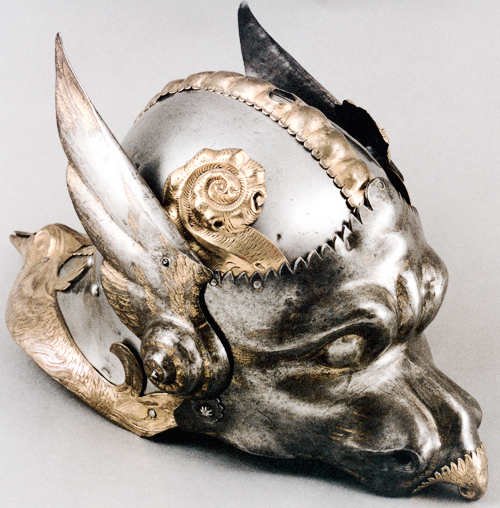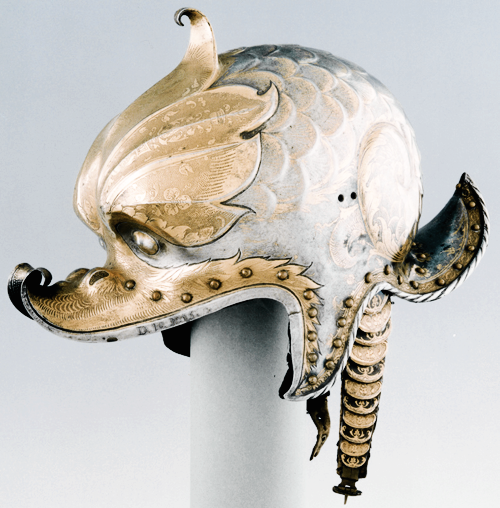Russian Sledges
Shared posts
Hand & Lock
I'm tempted to say the following two videos go, well, hand in hand:
The Amazing Monasteries of Bhutan
The old capital of the country (till 1955) is Punakha and it is home to perhaps the most imposing Dzong in the country. When built they also served as protective fortresses so they are usually set in the most commanding position geographically – such as at Taksang or here at the confluence of the rivers. It was finished in 1638 – and as such is the second oldest in the country. Each year there is a festival at the Dzong called Demoche and it recalls the 1639 invasion of the country by the Tibetans who were successfully repulsed.
The monastery is positioned at the confluence of two rivers, which have the most marvellous names. The first is Pho Chhu and the second is Mo Chhu. They translate simply as father and mother.
Tongsa monastery is the largest in the country and it was built in 1648. It was constructed at this point because it is at the perfect strategic position to survey the landscape for many kilometers around. It was also built so that any visitors to the region by dint of sheer geography would have to visit the monastery – and so it controlled the traffic from the east to the west of the country.
Each year an enormous banner which shows the eight manifestations of the Guru Rinpoche is shown to the pilgrims. The festival (which is known as a tsechu) lasts for fifteen days and on the dawn of the last day the Tongdrol banner is unfolded. A few hours later it is removed until the next year.
Over 100 monks reside here – and they have a sense of humor too.
Royal Society scientists angered by Prince Andrew's election as fellow
Russian Sledges'The ballots sent out to ordinary fellows provided only one box to tick, supporting the measure. Those opposed had to write "no" themselves or otherwise mark or spoil the paper.'
Some of the Royal Society's 1,450 fellows are unhappy at Duke of York's election and say 'royal fellows' should be phased out
After more than 350 years of largely happy association with assorted royalty the UK's pre-eminent scientific institution, the Royal Society, faces unprecedented dissent from members after Prince Andrew was elected to become a fellow of the organisation.
While the objections to Andrew centre specifically on his slightly chequered career as a royal, a small number among the 1,450 or so Royal Society fellowship are asking the wider question of whether it is time for an institution based on science to end the practice of honouring people on the basis of heredity.
The controversy has been fuelled by the way Andrew was elected to be a royal fellow, a status he shares with Princes Philip, Charles and William, Princess Anne and the Duke of Kent, while the queen is the organisation's patron. The ballots sent out to ordinary fellows provided only one box to tick, supporting the measure. Those opposed had to write "no" themselves or otherwise mark or spoil the paper.
The Royal Society, set up in 1660 under the encouragement of Charles II, announced Andrew's election as a royal fellow on Friday, alongside the elevation of several dozen distinguished scientists and engineers to become scientific fellows, with the author Bill Bryson made an honorary fellow.
The dissent emerged later that day on the personal blog of David Colquhoun, professor of pharmacology at University College London and a Royal Society fellow since 1985. Colquhoun wrote that he was worried about controversies such as the 2007 deal which saw the son-in-law of Kazakhstan's president buy Andrew's Surrey mansion for £3m more than its asking price, and the prince's friendship with Jeffrey Epstein, an American financier jailed for soliciting a minor for prostitution. The cumulative bad publicity saw Andrew step down as a UK trade envoy in 2011.
Colquhoun told the Guardian that the prince, officially titled the Duke of York, was "an unsavoury character" who should not be associated with the Royal Society. He said the organisation should consider getting rid of the royal fellow category altogether.
"I think it's an outdated concept," he said. "It was understandable that when the Royal Society was set up, there was no democracy and no constitutional monarchy, you needed royal support, especially if you were doing something that seemed at the time a bit revolutionary. But it just doesn't seem to be appropriate in the 21st century.
"It's a category that really should be phased out now. The objects of the Royal Society are nothing to do with the monarchy, and the monarchy, on the whole, has shown absolutely no interest in science."
While scientific fellows have their credentials peer-reviewed by committees before being voted in at a meeting of existing fellow, by tradition new royal fellows, as well as the organisation's president and vice president, are chosen via a postal ballot giving only a "yes" box to tick.
Colquhoun made his own view plain by typing a message onto his returned ballot saying, in large, red letters: "I most certainly do NOT support the election of the Duke of York."
Colquhoun has been publicly supported by a handful of other fellows, among them Peter Lawrence, professor of molecular biology at Cambridge University, who also supports an end to the category of royal fellows. A total of 147 fellows voted for Andrew in the postal ballot, with 24 returning spoiled paper, making for a turnout of 11%.
A Royal Society spokesman disputed how much support Colquhoun had, saying: "It's worth emphasising that it's a very small number of fellows who are making a lot of noise about this. Eighty-five percent of votes cast supported the election of the Duke of York."
The prince was, the spokesman said, probably the royal who is most actively engaged with science, notably through a scheme to support young scientists and his work on links between science and industry.
He said: "Prince Andrew has been elected on the basis of what he's been doing to support British science and the Royal Society. Those who are not really involved in the day-to-day work of the society may not appreciate how closely he has been working with us on these issues."
The practice of not having a "no" box for royal fellow ballots was traditional, and was being looked at, the spokesman said. However, he added, fellows could easily voice dissent: "In this vote, and in previous ones, it's always made explicit to the fellowship how they register a no vote, whether writing "no" on the ballot paper, or adding a comment, or whatever they choose."
Peter Walkerguardian.co.uk © 2013 Guardian News and Media Limited or its affiliated companies. All rights reserved. | Use of this content is subject to our Terms & Conditions | More Feeds
    
|
abandonedporn: Lake Reschen, South Tyrol, Italy. The reservoir...
Russian Sledgesffcfe


Lake Reschen, South Tyrol, Italy. The reservoir submerged two villages, Graun and Reschen when it was created. Graun’s 14th Century church tower is still visible above the water…or ice.
coolchicksfromhistory: Harvard Observatory astronomer Muriel E....
This Man Has Tried 6,297 Chinese Restaurants And He's Got The Excel Sheet To Prove It
corniestcorn: oh mY GOD OMFG THIS IS TOO CUTE I’M NOT A MAJOR...
oh mY GOD OMFG THIS IS TOO CUTE I’M
NOT A MAJOR DOCTOR WHO LOVER BUT I LIKE DALEKS AND THIS
ASDFGHJKL;
CUTE BABY OVERLOAD HELP MEEEEEEEEE
Colour Signatures, Visualizations of the Color Content of Famous Novels
Russian Sledgesadding this to my list of fun things to do with nltk
“Colour Signatures” by artist Jaz Parkinson are fascinating color graphs of the visual contents of famous novels. To create a visualization for a novel, Parkinson tallies up references to colors in the novel’s text. She then arranges the colors into a spectrum and creates the color graph. For information on prints or commissions, contact Parkinson directly.
via Radiolab
UMass Dartmouth Beginning To Regret Offering Course In Applied Domestic Terrorism
How To Make Cocktails With Your Keurig
Russian Sledgesbut why
"Access to guns is one reason, studies show. Western states have more lax gun laws than other parts..."
- Why Oregon’s suicide rate is among highest in the country | OregonLive.com
Bloomberg publishes CEO-to-employee-pay chart

Alan sez, "Bloomberg got tired of waiting for the SEC to implement its own rule requiring disclosure of data on how many times the median salary the CEO makes for publicly traded companies so they did a little sleuthing of public data and a little averaging math and calculated the ratio for the top 250 of the S&P 500 companies. The data are searchable and sortable and there's space for companies to comment, which quite a few have done. To my surprise Oracle is not #1, though it is the only tech firm in the top 10."
Top CEO Pay Ratios (Thanks, Alan!) ![]()
    
|
A 'Decadent And Depraved' Derby With Hunter S. Thompson
Harvard professor apologizes for remarks about Keynes - The Seattle Times
 The Seattle Times |
The Seattle Times John Maynard Keynes, who developed the theory that increasing government deficits stimulate a sluggish economy, is considered one of the most influential economists. A history professor said in a speech that Keynes' policies were too shortsighted because ... Historian Niall Ferguson apologises for 'stupid' remarks about Keynesthejournal.ie Niall Ferguson apology over Keynes remarksBBC News Share via e-mailBoston Globe San Francisco Chronicle -Houston Chronicle all 73 news articles » |
Behind closed doors
Russian Sledgesoverbey: in case you get that job in sydney

A 27sqm studio apartment in Sydney’s Woolloomooloo. Small in size, modest, low in cost. Big in style, clever spatial solutions. Inner city living for the one person family. Growing in numbers and a growing need for good affordable design. The Studio by Nicholas Gurney, shortlisted for the 2013 Australian Interior Design Awards.





odditiesoflife: Long Term Exposure Photos of...





Long Term Exposure Photos of Fireworks
Photographer David Johnson captures the International Fireworks Show in Ottawa, Canada using an unusual photographic technique of long term exposure. His photos of fireworks look more like bacteria under a microscope. The results are amazing.
Helmets of Holy Roman Emperor Charles V circa 1540 (by...
Russian Sledgesyesssssssssß
bombsfall: Tshirt preorders up on Monday. 25% of proceeds go to...

Tshirt preorders up on Monday. 25% of proceeds go to Planned Parenthood. Made with love by friends. Details next week. Save your nickels. Tell your friends.
NEED.
A Funeral Car Named 'Descanso,' or, When Death Rode the Rails in America
In the first decades of the 20th century, if you died in a city, one of the ways you might travel toward your final resting place was by public transit.
“In L.A. in the early years, the cemeteries were right next to the churches,” says David Housh, curator of the Pacific Railroad Society. “Then those got too crowded, and they had to move them out to the countryside. And not too many people had cars.”
The result? In certain parts of the country, including the Los Angeles area, dedicated funeral cars were added to the streetcar systems. The only one that survives relatively intact is the Descanso (Spanish for “rest”), currently on display at the Orange Empire Railway Museum in Perris, California.
The Descanso (originally known as the Paraiso) was part of the Los Angeles Railway, or Yellow Line, which at its peak comprised 20 streetcar lines with 1,250 trolleys. Built in 1909 and available for chartered use by funeral parties at a cost of about $25, the Descanso was one of two funeral cars, designed with a compartment that opened to reveal a special folding casket carrier. The family sat with the coffin in an interior with touches including stained-glass windows. It was all very dignified, designed to accommodate people who wanted to avoid a bumpy ride over unpaved roads in a horse-drawn cart on their way to the lay a loved one to rest.

The Delores of Lorain, Ohio. Image courtesy of the Black River Historic Society
Another city that did a brisk business in funeral trains was Chicago, where the ‘L’ took mourners accompanying caskets to cemetery station stops in specially designed funeral cars at a rate that reached 22 trips per week in 1907, according to a fascinating investigation by WBEZ. Even a smaller city such as Lorain, Ohio, got into the funeral business, as a photo of a streetcar named Delores from the Black River Historical Society documents.
The Descanso was retired from duty in 1924 as private automobiles took over the funeral trade, on their way to dominating virtually all transportation in Southern California. By 1963, the Yellow Line itself was completely dismantled.

The Descanso on the Cajon Pass. Image courtesy of the Pacific Railroad Society
But the Descanso had an interesting second act, serving as a different kind of resting place. In 1940, it was installed at Summit in the Cajon Pass between the San Bernardino and San Gabriel mountains, providing a place for railfans to hang out as they waited for trains to pass along the mountain tracks. The car was outfitted with bunks and cooking facilities.
That era, too, came to an end, when in 1967 the Santa Fe Railroad closed the station at Summit. But the car was preserved by rail enthusiasts who saw it as a vital piece of the area’s history. Today it is on display at the Orange Empire Railway Museum in Perris, California, a reminder of a time when every aspect of life — and death — rode the rails in America.
    
|
Male Neckwear, Handy Guide For Picking Out an Appropriate Necktie
Russian Sledgesshared for multitask suicide's endorsement/disdain/whatever
Male Neckwear is a handy guide created by UK-based illustrator Stephen Wildish of Wildish&co that will provide assistance when you are stuck choosing an appropriate necktie for the day.
image via Stephen Wildish
iammyurl: siderealsandman: So she became Secretary of State...
sylphorix: Still under the impression that video games are...

Still under the impression that video games are strictly for kids? Hilda Knott would like to have a word with you. And perhaps a game.
The 85-year-old British gamer has been mashing buttons for 40 years — roughly the life of the video game industry – and is showing no signs of slowing down.
We’re not talking about just a bunch of boring PC card games, either. In a video interview with the BBC, Knott, who turns 86 next month, shows off her formidable gaming setup, including a sweet 65-inch HDTV and a brand new Playstation 3 Superslim. She discusses her love of Grand Theft Auto IV, which she had a “hilarious” time playing with her 94-year-old-aunt.
Knott acknowledges that her deep love of gaming has helped her stay mentally fit, because “a lot of them have puzzles, working out how to do something.”
She isn’t joking, either, as the video shows her playing the niche tactical role-playing game, Disgaea 4. That’s hardcore. This lady is a gamer, through and through.
And while many of her fellow octogenarians credit games like Wii Sports for keeping them physically active, Knott’s favorite part about playing video games will sound more familiar to the Halo crowd.
“Finding something new in the game,” she says. “Getting on to the next stage, or the next event. And the achievement of finishing it.”
With 40 years of gaming under her belt, we imagine she’s finished quite a few. Hats off to you, Hilda!
Decoding The City: The Road Graffiti Placed by Utility Workers

Infrastructural graffiti in the streets of New Haven, CT (original photo)
Cities around the world are covered in spray-painted hieroglyphics and cryptic designations scrawled on public surfaces; unintelligible tags and arcane signs intended to communicate messages to a specialized audience with a trained eye. Such markings are so prevalent that they just blend into the urban patina of dirt and disrepair and go largely unnoticed. I’m not talking about illegal graffiti. Rather, the officially sanctioned infrastructural “tagging” employed by public works departments around the country.
You’ve probably seen these markings on streets and sidewalks. Multi-colored lines, arrows and diamonds denoting the presence of some subterranean infrastructure or encode instruction for construction or maintenance workers. A secret language that temporarily manifests the invisible systems that power our world. Recently, Columbia’s Studio-X blog shared the decoder ring that unlocks these secret messages:

The American Public Works Association ULCC Color Codes for Marking Excavations (image: LA One Call 811)
A version of the above code was first implemented in California after construction workers accidentally cut through a petroleum pipeline in 1976, resulting in a fatal explosion that destroyed half a city block. To prevent future incidents, a system of notation known as DigAlert was developed to communicate vital information to anyone who might be doing construction work or excavations in areas near underground cables or pipelines. Since then, the American Public Works Association established a standard color code to identify subterranean infrastructure in American cities. This standard is a recommended by most national agencies, but, like the “fire diamond,” it is not a mandate intended to supersede any local regulations.

left: Munsell Color Wheel (image: Munsell.com); right: excerpt of ANSI Z535 Safety Color Code (image: scribd)
These “safety colors” –expanded to include red, orange, yellow, green, blue, purple, brown, grey, white, and black– have been formalized by the American Standards Institute (ANSI) as Safety Color Code Z535, which provides Munsell notation and Pantone color-matching information to help ensure consistency across mediums.
While the color system warns workers about certain types of hazard, there is a complementary language used to approximately mark the underground location of a conduit, cable, or pipe. According to the Guidelines for Operator Facility Field Delineation established by the Common Ground Alliance, spray-painted lines (in the appropriate color, of course) space between four-feet and fifty-feet apart should be used to mark the center of a single facility or, if multiple conduits are running in a single trench, over their outside edges with arrows pointing in the the direction the services are running with a perpendicular line connecting the edge marks to form an H (as seen in the photo at the top of this post). A diamond is used instead of the perpendicular line to indicate a duct system.
While just as esoteric (though not as artistic) as illegal graffiti, these regulated utility markings encode a different type of turf. And knowing that Krylon code can save lives. Such urban annotation reveals the danger and complexity of American cities and is just one more example of the standardized, secret signs that surround us.
Previously: Decoding the City: The Fire Diamond
babyslime: tothecabaret: 1930’s Teen Delinquents When I was a...

1930’s Teen Delinquents
When I was a teenager my mother found my grandmother’s (her mother) school scrapbook. It included things like photos, notes, and a two page spread of every demerit she ever received over the course of her formal education. Each of them set aside with little tags like she was so fucking proud of them. They were all for things like, “Unladylike behavior” or, “Skirt too short” or, “refuses to listen to authority”. I loved that spread so much.
I should be enough for him.

I should be enough for him.
Memo to Scott Stantis: Tim Tebow Is No Jason Collins
Scott Stantis, a conservative cartoonist for the Chicago Tribune, drew this in response to Jason Collins‘ coming out:

The idea, of course, is that the media is celebrating Collins for telling the world he’s gay, while they were mostly annoyed by Tim Tebow for telling the world he’s Christian.
If that sentence seems weird to you, that’s because the cartoon makes no sense.
Collins did something no male in the NBA (or several other popular leagues) had done: He came out as gay while still playing professionally.
Believe it or not, there’s no shortage of Christians in any sporting league. Need evidence? Just listen to someone on the winning team during a post-game interview.
When Tebow told the world he was Christian — more Christian than other Christians, really, with his eye black messages and on-field prayers — it was annoying. It doesn’t take “courage” to proudly proclaim, “I’m in the majority!”
Not to mention, Tebow chose his religion; Collins didn’t choose his sexuality. Tebow wanted you to become a Christian; Collins isn’t trying to (in fact, can’t) make you gay.
Finally, Christianity of the sort that Tebow preaches is the reason people like Collins have such a hard time coming out. Tebow hasn’t said anything disparaging about Collins, but evangelical Christians have no doubt acted like they’re being oppressed by the “gay agenda” while at the same time being the oppressors.
The main thing both players have in common right now is that they’re each looking for a team to play on — a team that will judge them for their skills and not what they say or do outside the game.
(Thanks to @InkeddMommy for the link)
Can Someone Please Ask Janelle Monae To Make a Feature-Length Sci-Fi Musical Already?

It’s not quite as aggressively science fictional as her phenomenal video about a droid auction-slash-rock-concert for “Many Moons,” which she released more than four years ago, but the video for Janelle Monae’s excellent collaboration with Erykah Badu “Q.U.E.E.N.” is a reminder of just how important her contributions to science fiction—as well as to music—have been since she broke out onto the national scene:
Monae is hardly the first musician to situate her musical persona in science fiction. Psychadelia gave us Jefferson Starship. George Clinton has a long and deep engagement with spaceship iconography and science fiction more broadly. On “Roses,” a caustic anti-love song with no other particularly science fictional elements from his The Love Below album, Andre 3000 entreated the woman being addressed in the track to “come back down to Mars.” When you read music as narrative fiction, locations beyond Earth and times far removed from ours are common settings. But in a few short years, and across multiple songs and videos, Monae has created a particularly coherent universe full of robots sold as luxury goods to decadent, exceedingly well-dressed droids and rebels, institutions that house revolutionary figures, some of whom can walk through walls, and electrifying musical performances.
And the coherence of her music video universe isn’t the only thing striking about Monae’s ouvre, or that marks her as a science fictional thinker. As I wrote on Wednesday, Hollywood tends to portray technology and our loss of control of it—or misuse of it—as a major factor in the creation of radically altered future. Monae’s music videos frequently operate from the premise that cultural tools are at least as powerful as technical or physical ones.
In the video for “Many Moons,” Cindi Mayweather, an android who Monae presents as an alter ego, gives an electrifying performance at an auction of extraordinarily expensive androids. Her music, which makes reference to a wide range of social and political issues, is initially treated as dance music for frenzied, regimented revelers. But when her performance literally shorts her out, what was intended as a classy backdrop to an ugly transaction disrupts it. The musician becomes an activist through her passionate dedication to her performance. In the introduction to “Q.U.E.E.N.” a voiceover explains that visitors are at a museum where revolutionaries who disrupted society with music have been archived for public consumption. They’re resurrected by a record snuck into the facility, which frees Monae’s character to ask questions that begin in the personal, like “Am I a freak for dancing around? / Am I a freak for getting down?” and move to the political: “I asked a question like this / ‘Are we a lost generation of our people?’ / Add us to equations but they’ll never make us equal. / She who writes the movie owns the script and the sequel. / So why ain’t the stealing of my rights made illegal? / They keep us underground working hard for the greedy, / But when it’s time pay they turn around and call us needy.”
Monae isn’t the only person with the idea that cultural power can create dramatic inflection points in the evolution of the future. Jennifer Egan’s novel A Visit From The Goon Squad culminates in a concert by an artist who begins the book as an extraordinarily broken man and reemerges as a children’s musician. The concert starts as a marketing gig for one of the characters in the novel, but it turns into an astonishing experience that united two generations, one similar to the Millenials, and the one that followed, who have embraced digital communication but rejected drug use and tattoos. It’s an amazing conclusion to the novel in part because it’s strikingly different from much of what we see in science fiction in a number of ways: it’s set in the near-future instead of far off, it’s hopeful instead of apocalyptic, and it’s collective and artistic instead of individual and technological.
To a certain extent, the place where Egan ends is the one from which Monae blasts off. Given Monae’s extraordinarily precise sense of visual style, the concepts she’s pulled together and expressed with directors with a range of visual styles, and the way her lyrics would fit in larger narrative settings, I’d love to see what planet she’d land on if she had the opportunity to tell stories over 120 minutes instead of six of them.
    
|






























